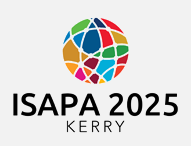Start Date
18-6-2025 12:30 PM
End Date
18-6-2025 2:00 PM
Abstract
Introduction: The Brazilian School Paralympics is considered the largest school sports event for individuals with disabilities, aged 12 to 17, organized by the Brazilian Paralympic Committee. Focused on social development, democratization of sports, and sociocultural exchange, the competition has been held since 2009 and has undergone several evolutions. The objective of this study was to analyze the expansion of participation in the School Paralympics from 2009 to 2024.Methodology: This study is characterized as both qualitative and quantitative, utilizing documentary analysis based on publicly available data from the official website of the Brazilian Paralympic Committee.Results: The data revealed that the number of participants increased from 525 to 2013, indicating a significant rise in the number of young individuals with disabilities gaining access to competitive sports while still in school. Furthermore, there was an expansion in the number of sports categories, which grew from 8 to 13. Another notable factor was the expansion of the event within Brazil, from 10 states to all 26 states. Additionally, in some editions, international athletes participated, including teams from the United Kingdom and Paraguay, as well as young refugees from Venezuela residing in Brazil.Conclusions: It is clear that the Brazilian School Paralympics has experienced significant development between 2009 and 2024, as evidenced by the increase in participants, states involved, number of sports categories, and international collaborations. Democratizing sports for young individuals with disabilities is essential, and expanding events like this can significantly enhance various aspects of their lives.
Recommended Citation
Lins, Pedro André da Silva; Fogão, José Antônio; Silva, Gustavo da Cunha; Viana, Pablo Henrique Carneiro de Matos; Rodrigues, João Vítor Sebastião; dos Santos, Rogerio Virginio; Machado, Beatriz Cuppi; and Tanure Alves, Maria Luiza, "Brazilian School Paralympics: an analysis of the evolution" (2025). International Symposium of Adapted Physical Activity and International Symposium on Physical Activity and Visual Impairment and Deafblindness. 48.
https://sword.mtu.ie/isapa/2025/day3/48
Brazilian School Paralympics: an analysis of the evolution
Introduction: The Brazilian School Paralympics is considered the largest school sports event for individuals with disabilities, aged 12 to 17, organized by the Brazilian Paralympic Committee. Focused on social development, democratization of sports, and sociocultural exchange, the competition has been held since 2009 and has undergone several evolutions. The objective of this study was to analyze the expansion of participation in the School Paralympics from 2009 to 2024.Methodology: This study is characterized as both qualitative and quantitative, utilizing documentary analysis based on publicly available data from the official website of the Brazilian Paralympic Committee.Results: The data revealed that the number of participants increased from 525 to 2013, indicating a significant rise in the number of young individuals with disabilities gaining access to competitive sports while still in school. Furthermore, there was an expansion in the number of sports categories, which grew from 8 to 13. Another notable factor was the expansion of the event within Brazil, from 10 states to all 26 states. Additionally, in some editions, international athletes participated, including teams from the United Kingdom and Paraguay, as well as young refugees from Venezuela residing in Brazil.Conclusions: It is clear that the Brazilian School Paralympics has experienced significant development between 2009 and 2024, as evidenced by the increase in participants, states involved, number of sports categories, and international collaborations. Democratizing sports for young individuals with disabilities is essential, and expanding events like this can significantly enhance various aspects of their lives.

